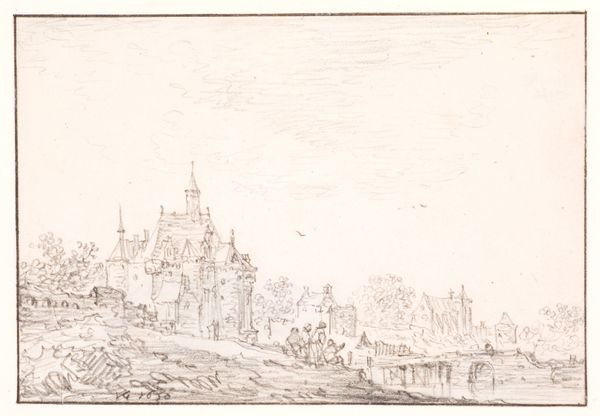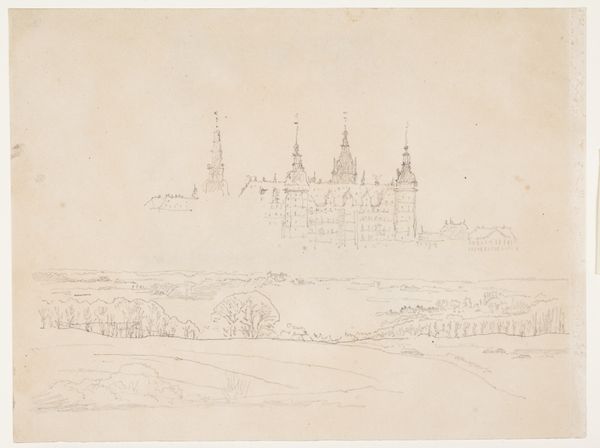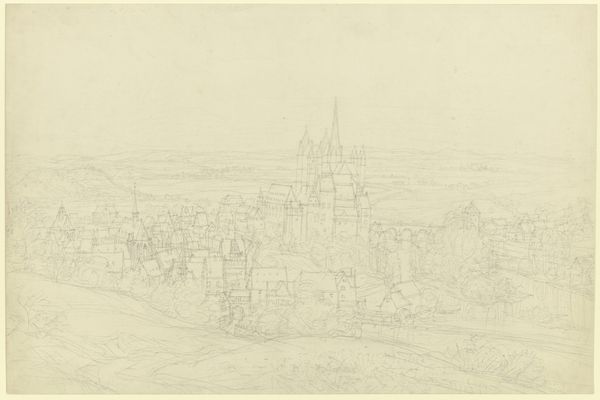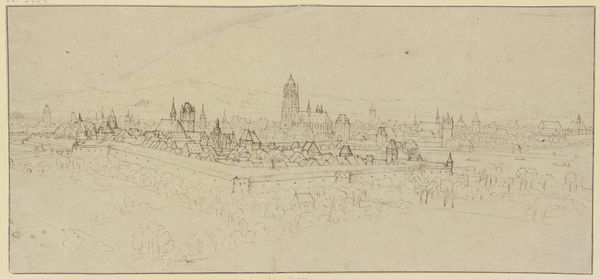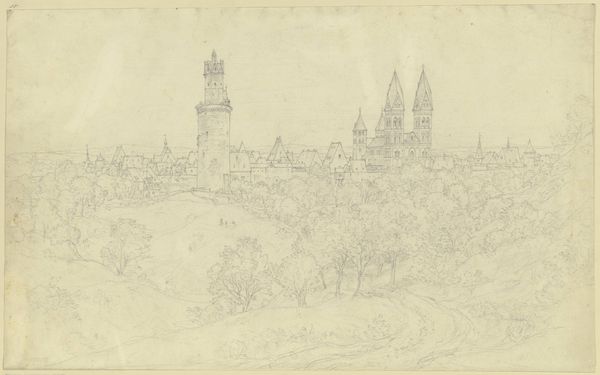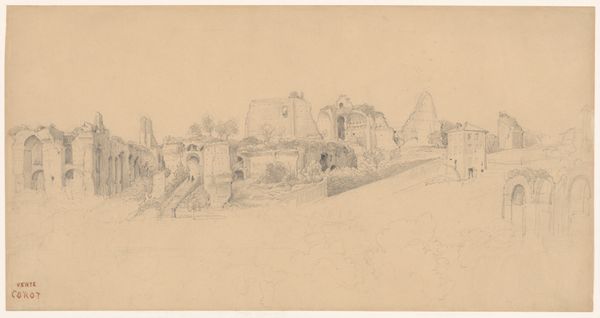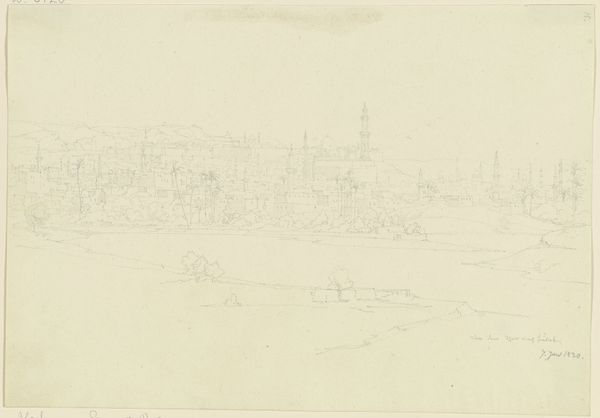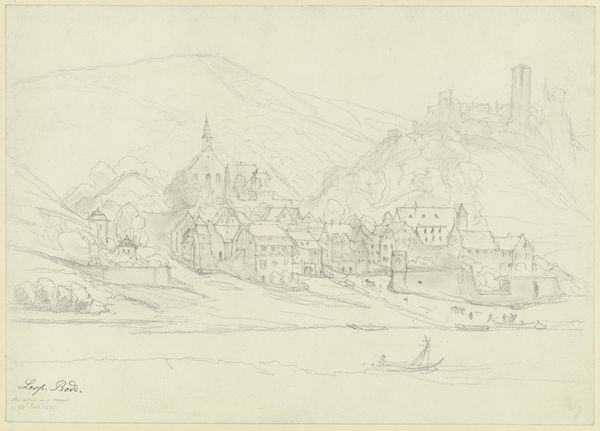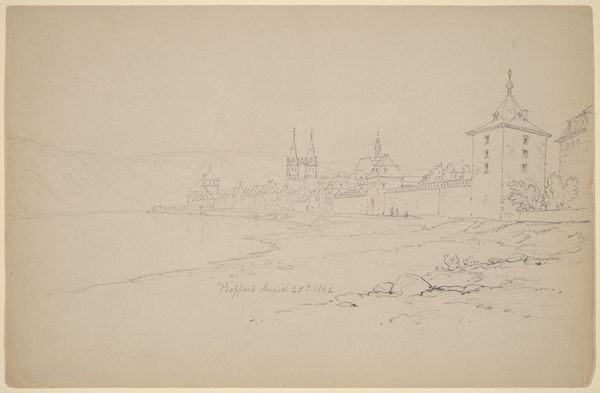
drawing, pencil
#
drawing
#
pen sketch
#
landscape
#
pencil
#
15_18th-century
#
academic-art
Copyright: Public Domain
Editor: So, this delicate drawing is "Zschopau mit Schloss Wildeck," dating back to the late 1770s, created with pencil and pen by Georg Melchior Kraus. I find its muted tones quite calming, almost like a faded memory. What do you see in this piece? Curator: What I see here is a negotiation between objective observation and subjective impression. The spire, the castle – these are powerful visual anchors, speaking to both civic pride and perhaps, even a longing for the perceived security of the past. Notice how the lines aren't just depicting the physical world. Do you see the way the lightness of the pencil work creates a sense of distance, almost like a dream? Editor: Yes, it does feel a bit ethereal. Is that a common thread in works of this period? Curator: In some ways, yes. The late 18th century was a period of immense change, societal upheaval. Artists often grappled with this by referencing familiar symbols—the castle as a signifier of stability or conversely, hinting at their impermanence through a softer focus. It’s a quiet commentary, wouldn’t you agree? Editor: That's a fascinating point. So, even seemingly straightforward landscape sketches can hold layers of symbolic meaning. I hadn't considered that level of interpretation. Curator: Absolutely! It makes one consider what elements of our own time we imbue with such visual weight today. Perhaps a skyscraper, or a bridge. These too become symbols beyond their mere function. What does that realization evoke in you? Editor: I suppose it's about becoming more aware of the silent language around us. That it has always been a visual conversation between us, societies, across time. Thank you for shining light on it.
Comments
No comments
Be the first to comment and join the conversation on the ultimate creative platform.

